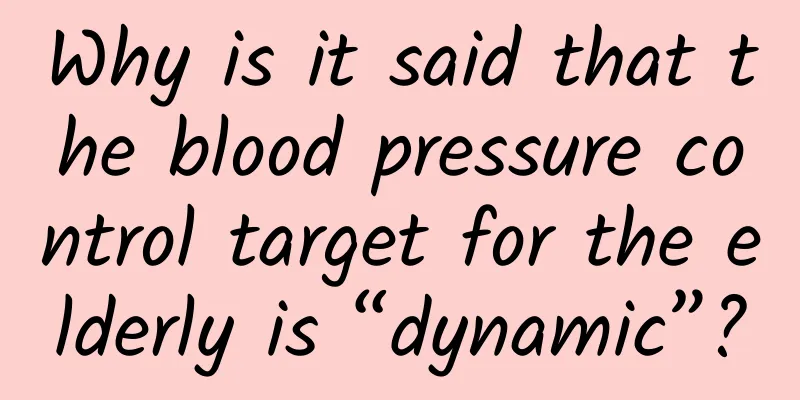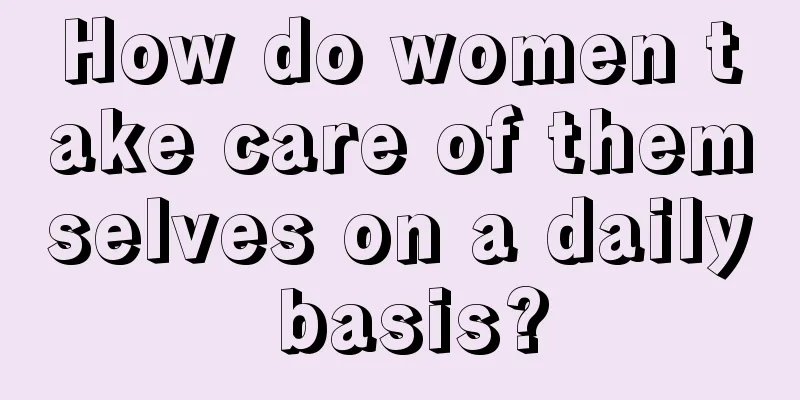Why is it said that the blood pressure control target for the elderly is “dynamic”?

|
An elderly friend told Huazi that he heard that the blood pressure requirements for the elderly are different from those for young people, and should be kept higher, which is more beneficial for blood supply to the heart and brain and safer. Is this true? Huazi said that the blood pressure control target for the elderly can be set slightly higher, but the purpose of doing so is not to better protect organs such as the heart, brain, and kidneys, but for some elderly people with severe arteriosclerosis, maintaining a higher blood pressure is a last resort. 1. The blood pressure standards for the elderly and young people are the same What everyone needs to understand is that the diagnostic criteria for hypertension are unified, and there are no different criteria for different ages. Regardless of age, as long as the high pressure (systolic blood pressure) reaches or exceeds 140 mmHg and the low pressure (diastolic blood pressure) reaches or exceeds 90 mmHg, it is considered hypertension. When measuring yourself at home, because the home environment is more relaxing, the high blood pressure standard for self-measurement at home is lower than that in the hospital clinic. When the high blood pressure is greater than or equal to 135 mmHg and the low blood pressure is greater than or equal to 85 mmHg, it is high blood pressure. The degree of hardening of the large arteries in the elderly is high, and the characteristic of hypertension is a significant increase in high pressure, while the low pressure remains unchanged or decreases, which is called isolated systolic hypertension. 2. Higher blood pressure control targets are a helpless move The higher the blood pressure, the greater the damage to the heart, brain, kidneys and other organs, as well as blood vessels, and the higher the probability of developing cerebral hemorrhage, cerebral infarction, coronary heart disease, heart failure, myocardial infarction, kidney failure and other diseases. Strictly controlling blood pressure is an important means of preventing complications of hypertension. However, the arteries of elderly patients with hypertension usually have severe hardening and stenosis, especially those whose blood pressure has not been well controlled for a long time. They have adapted to higher blood pressure and when their blood pressure drops, they may suffer from insufficient blood supply to important organs. In order to maintain the normal function of organs, they can only choose higher blood pressure control targets as a last resort. 3. The blood pressure control target for the elderly is “dynamic” Many elderly friends asked Huazi, "What should the blood pressure be controlled to for people over 65?", "What can the blood pressure be controlled to for people at 70?" Huazi said that the blood pressure control target for the elderly is not determined by age, but depends on each person's physical condition, whether there are complications and the severity of the disease. The blood pressure control target is "dynamic" and different for everyone. Generally speaking, for people over 65 years old, the first blood pressure target is 150/90 mmHg. After reaching the target blood pressure, observe for 2 weeks. If there are no symptoms of insufficient blood supply such as palpitations, dizziness, and blackouts, adjust the medication and continue to lower the blood pressure to below 140/90 mmHg. After reaching 140/90 mmHg, observe for another 2 weeks. If it is still well tolerated, adjust the medication again to lower the blood pressure to below 130/80 mmHg, until the blood pressure is controlled at around 120/80 mmHg. If the blood pressure cannot be tolerated during the blood pressure reduction process, the previous higher blood pressure will be used as the control target. 4. Blood pressure reduction goals for isolated systolic hypertension Elderly people with low blood pressure below 60 mmHg should be cautious in lowering their blood pressure. The current popular view internationally is that most elderly people can tolerate lower low blood pressure and can accept anything above 50 mmHg, so the main thing is to control the high blood pressure to meet the standard. However, low blood pressure may affect blood supply to the heart and brain, so when lowering blood pressure, use small doses of medication, increase the dosage slowly, and pay close attention to changes in blood pressure and insufficient blood supply. The control goal of isolated systolic hypertension is to reduce the systolic pressure to below 150 mmHg, and as long as it can be tolerated, slowly increase the dosage to try to keep the systolic pressure below 130 mmHg. Studies have confirmed that in the elderly population, maintaining high blood pressure below 130 mmHg will result in a better prognosis. If tolerated, it is best to maintain it at around 120 mmHg. To sum up, there is no fixed model for the treatment of hypertension. Elderly hypertensive patients have many underlying diseases, and each person's situation is different. The blood pressure reduction target cannot be "one size fits all". You should choose a dynamic blood pressure target based on your actual situation. The best blood pressure target is around 120/80 mmHg. When using antihypertensive drugs, you must do so under the guidance of a doctor. If you have any questions about medication, please consult a doctor or pharmacist. I am pharmacist Huazi, welcome to follow me and share more health knowledge. |
Recommend
A woman's feet reveal her inner consciousness
Introduction: I once chatted with a male friend a...
What is the cause of endometrial thickening? It can be divided into physiological and pathological
The main causes of endometrial thickening in wome...
Discharge still present 10 days after abortion
When a pregnant woman cannot continue the pregnan...
Will uterine polyps recur?
Uterine polyps are a relatively serious disease. ...
Women sweat when they sleep at night. Do you know why?
Whether you are a man or a woman, if you always s...
What to do if you have lower abdominal pain after sex
There are many reasons for women's lower abdo...
Will humidity affect pregnancy?
In Traditional Chinese Medicine, dampness is a te...
I have just gotten pregnant and there is blood after urinating.
For some women, their metabolism will accelerate ...
Seven months pregnant with blood in urine
If pregnant women find that their urine contains ...
Is it painful to have abortion during pregnancy?
There are two types of abortion: artificial abort...
What is the difference between zucchini and squash? Difference between night-blooming squash and zucchini
Zucchini is a common vegetable in our daily life....
The correct way to heat the chest of pregnant women
Generally speaking, women's bodies will under...
How to check anemia in pregnant women
Iron deficiency anemia is very common in our live...
How many days does my period usually last?
Under normal circumstances, women's menstrual...









